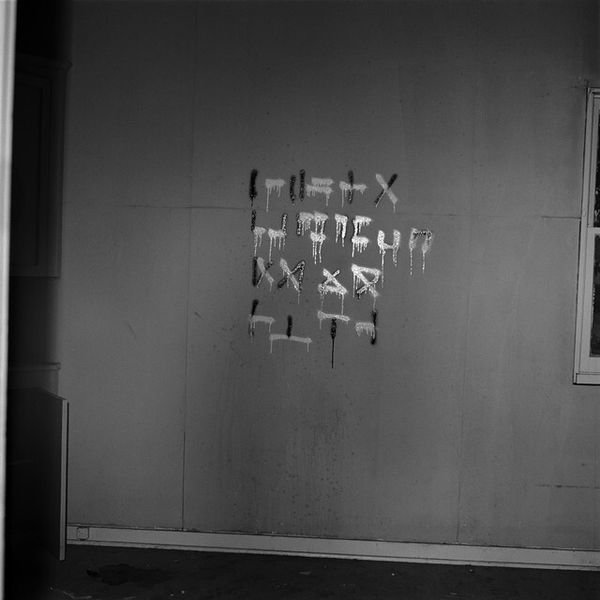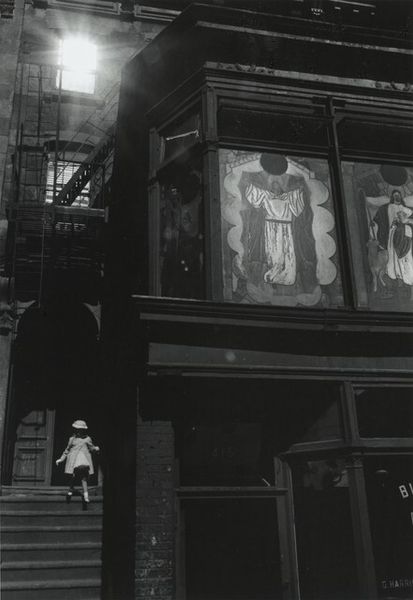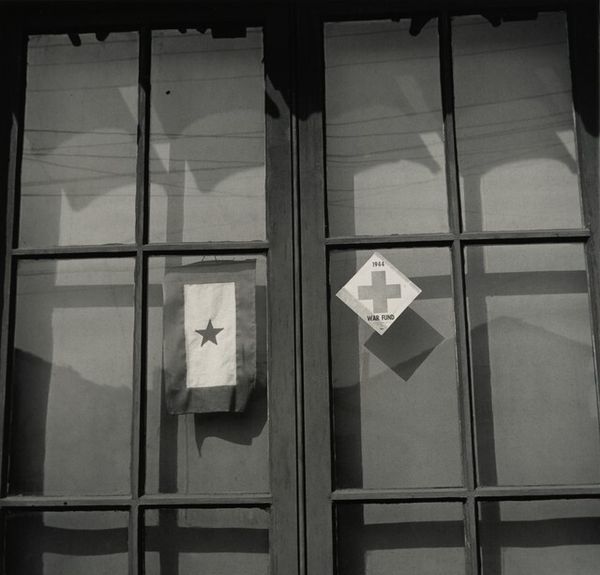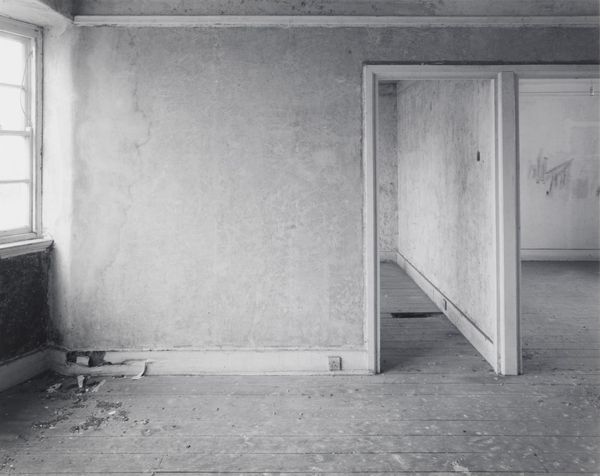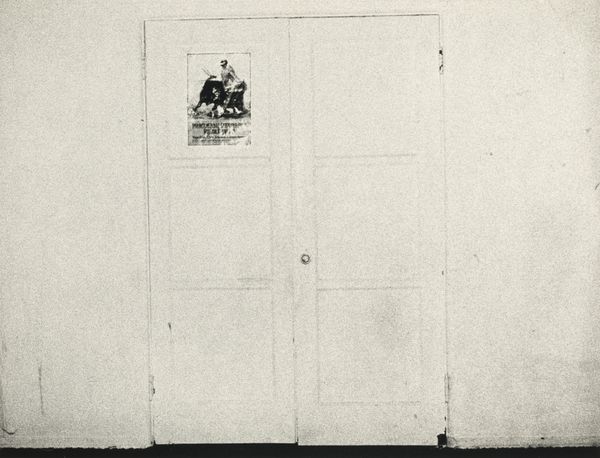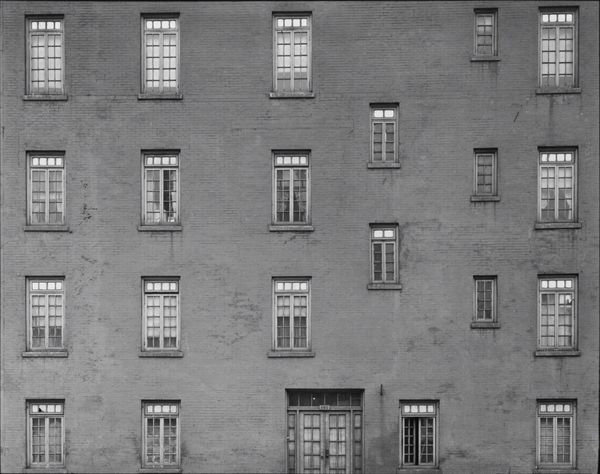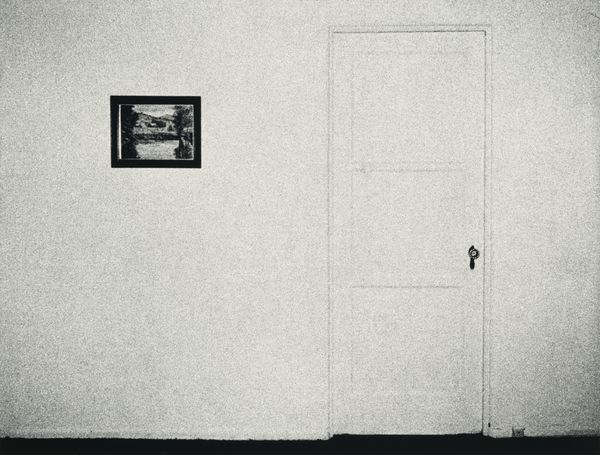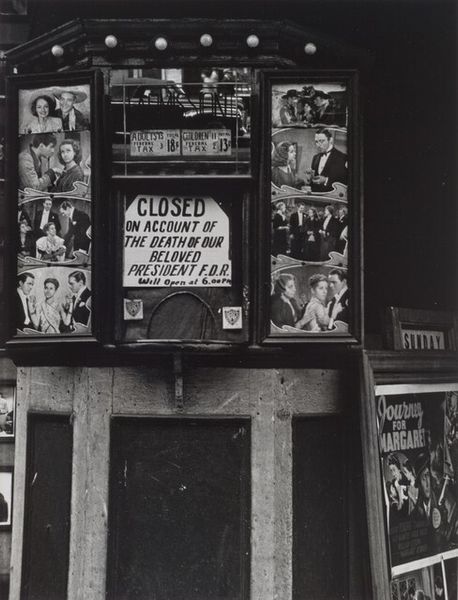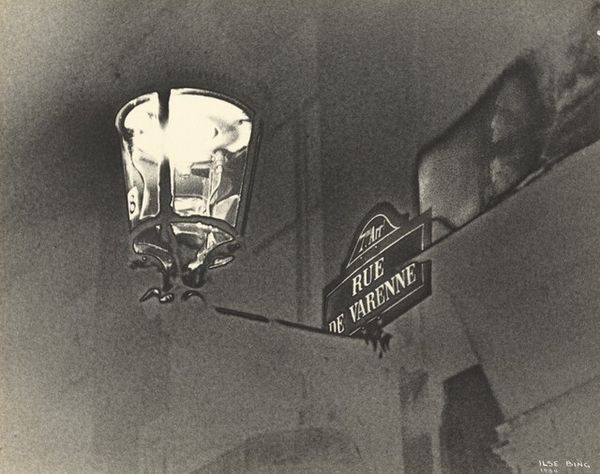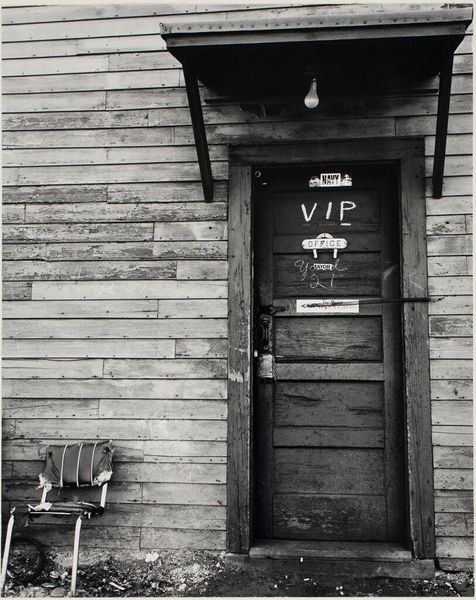
photography, gelatin-silver-print
#
social-realism
#
street-photography
#
photography
#
gelatin-silver-print
#
monochrome photography
Dimensions: image: 25.1 x 21.1 cm (9 7/8 x 8 5/16 in.) mount: 50.7 x 40.6 cm (19 15/16 x 16 in.)
Copyright: National Gallery of Art: CC0 1.0
Editor: This is "First Timothy (Storefront Churches series)," a black and white photograph by Milton Rogovin, taken sometime between 1958 and 1961. It depicts a simple storefront church. The directness of the image strikes me. It feels unadorned, yet… profound. What do you see in this piece? Curator: I see layers of meaning embedded in its seeming simplicity. Consider the cross, boldly painted. It's a symbol instantly recognizable, yet its directness here evokes a complex history. What cultural memories does it trigger, do you think? Editor: Immediately, Christianity, but…there's also something about perseverance, given the modest surroundings. Is that intentional? Curator: Precisely. Rogovin documented these storefronts in working-class neighborhoods, places of refuge and strength. The slightly worn door itself—it speaks to endurance. The very materials used tell a story. Note how light reflects – almost a beacon amidst shadow, recalling themes of faith and hope amidst hardship. Does this add another layer to the symbolic interpretation? Editor: Definitely. It is less about architectural beauty, and more about a powerful, spiritual meaning. I was drawn to its simplicity initially but understanding these symbols makes it resonate so much more. Curator: These storefronts are not merely buildings; they're visual testimonies to a community's unwavering faith and resolve. These visual echoes serve as a bridge across generations, inviting contemplation on the enduring power of belief and community in shaping human experience. Editor: It’s remarkable how Rogovin captured that with such understated imagery. Thank you. It's given me a whole new appreciation for social-realism and its connection to symbolism.
Comments
No comments
Be the first to comment and join the conversation on the ultimate creative platform.
